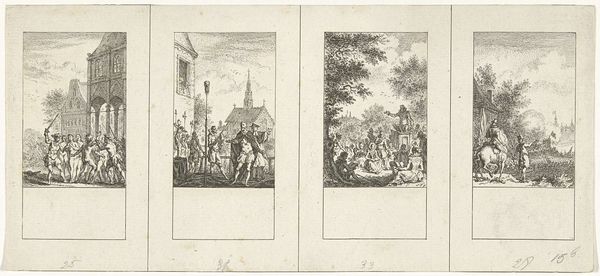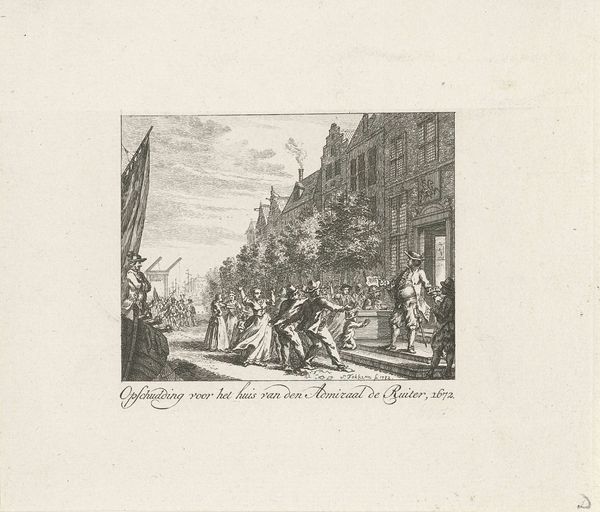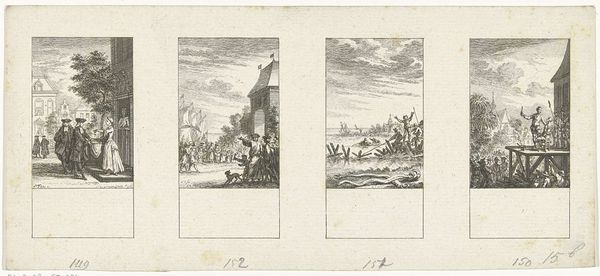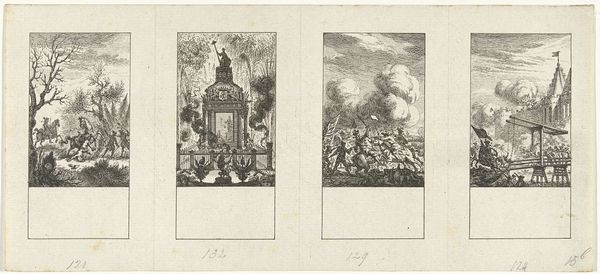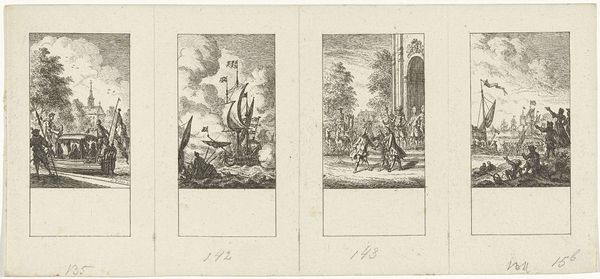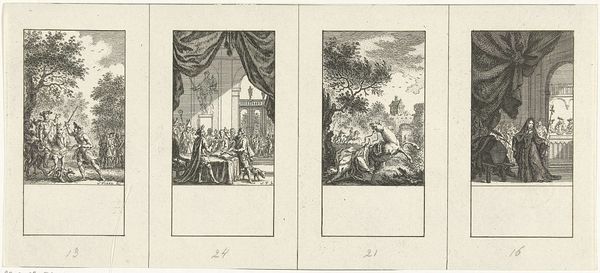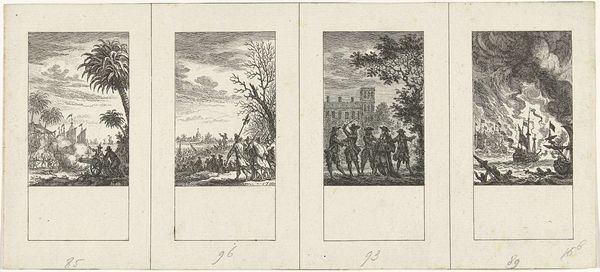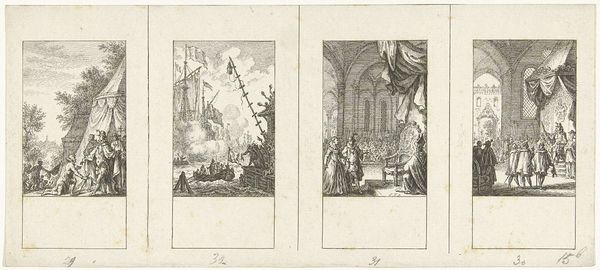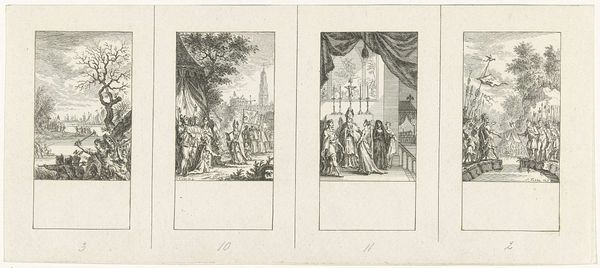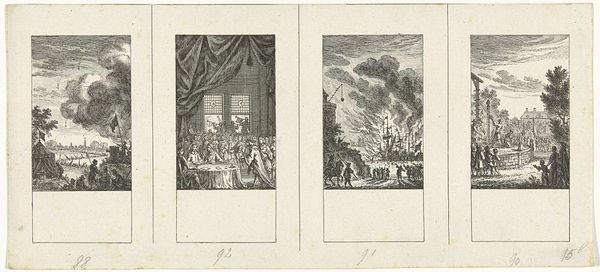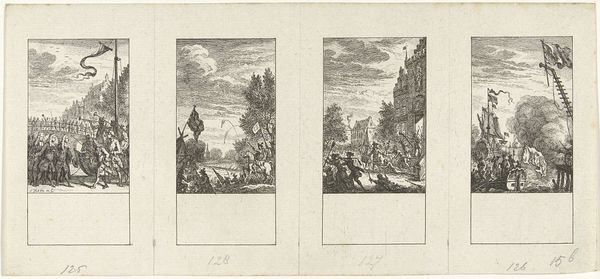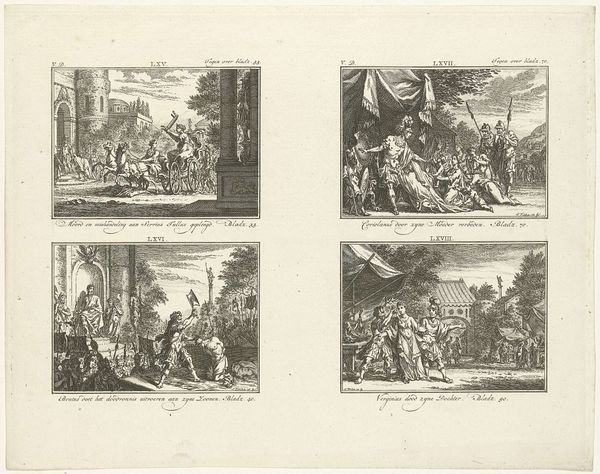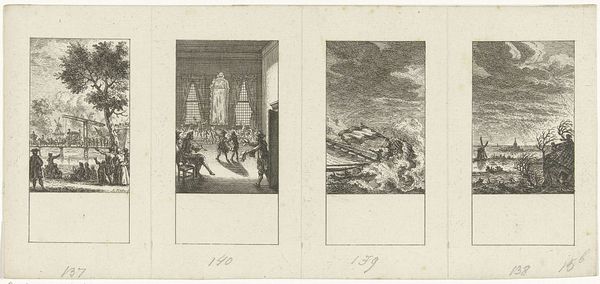
print, etching, engraving
#
narrative-art
# print
#
etching
#
etching
#
history-painting
#
engraving
Dimensions: height 110 mm, width 246 mm
Copyright: Rijks Museum: Open Domain
Curator: Look at this fascinating print by Simon Fokke titled, "Vier episodes uit de vaderlandse geschiedenis," dating from 1722 to 1784. The print presents four distinct scenes from Dutch history, each rendered in meticulous detail through etching and engraving. What strikes you initially about it? Editor: My first impression is the clear depiction of both ceremonial authority and violent conflict. The juxtaposition is interesting—the formal gathering with the celebratory riot gives a powerful, almost cynical, perspective on Dutch identity and national pride. Curator: Indeed. Fokke's work very consciously participates in crafting and codifying the narrative of Dutch history. The scenes include important political events alongside demonstrations of social unrest. The piece encourages us to consider the varied forces at play in shaping national identity. How do you interpret its visual rhetoric, considering your emphasis on deconstructing dominant narratives? Editor: Well, I can’t help but see a critical lens here. There’s the explicit, the patriotic image-making on display – rulers, proud citizens, that kind of thing. Then there’s this underlying thread of tension and turmoil, a challenge to the myth of unwavering unity and progress. For example, in one of the episodes there is violence against what seems like the house of someone prominent...It calls into question who benefits from the promoted ideas of national triumph. Curator: I understand what you mean, I find it interesting to understand if it can be argued that Fokke meant for this kind of subversive read. It appears this print likely functioned as a form of nationalistic propaganda, distributed during an era of evolving political sentiments. Editor: Absolutely, that's the central question! It highlights how artistic representations are almost always deployed as tools to build ideological justification. These supposedly objective historical moments are shaped, curated, and used to justify particular structures of power. This artwork subtly prompts viewers to challenge this dominant narrative. I think of post-colonial narratives in places like South America and the way art played the same role there. Curator: So in the end the act of creating this work of art served to create not only propaganda but the invitation for dissenting. This has been enlightening. Thanks for your insight! Editor: Likewise! Thinking about power structures in the context of nationhood through visual media certainly helps deepen how we think of the rise of popular media in shaping these modern national concepts.
Comments
No comments
Be the first to comment and join the conversation on the ultimate creative platform.
